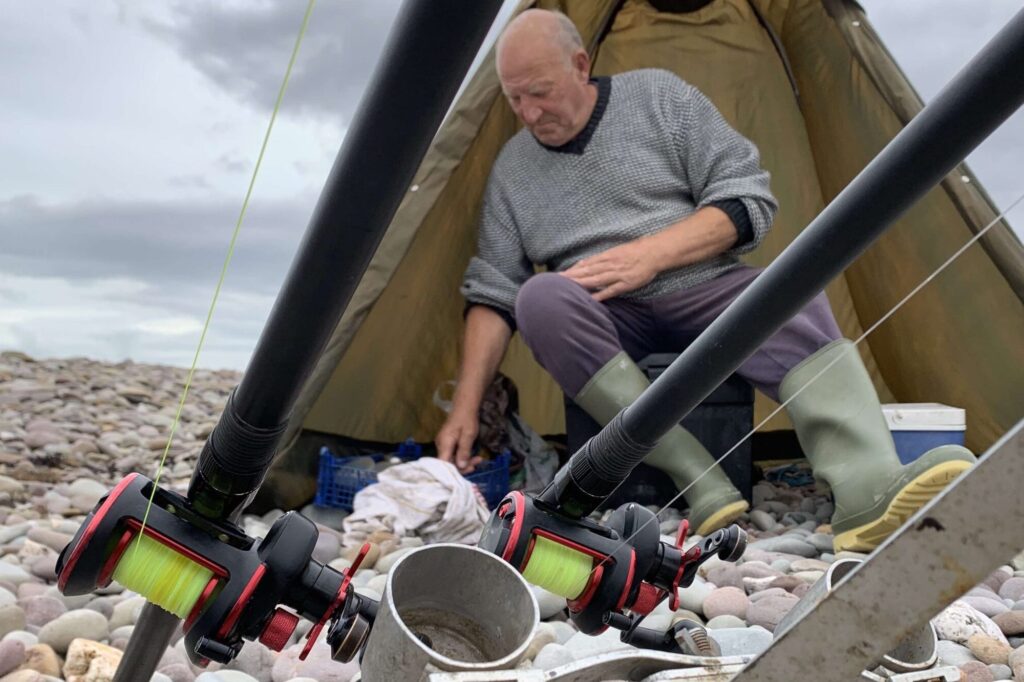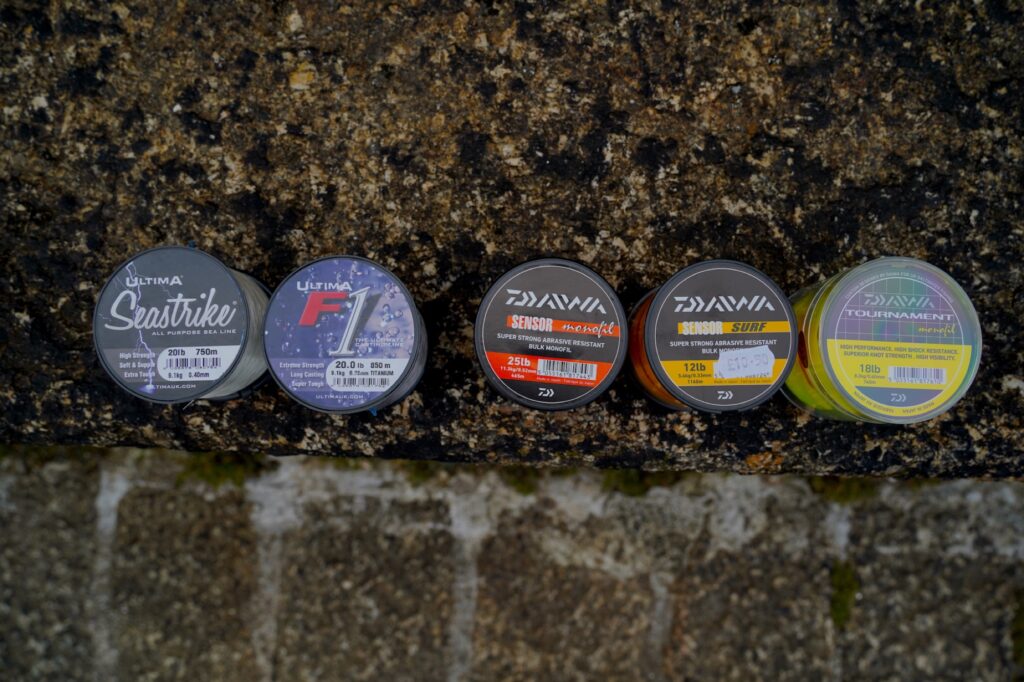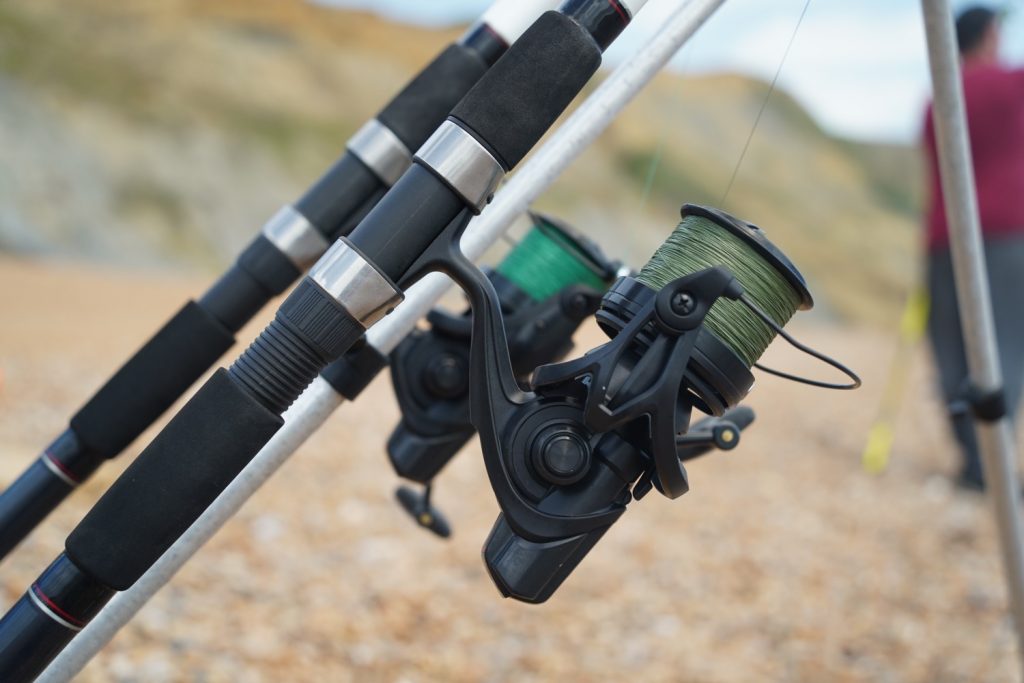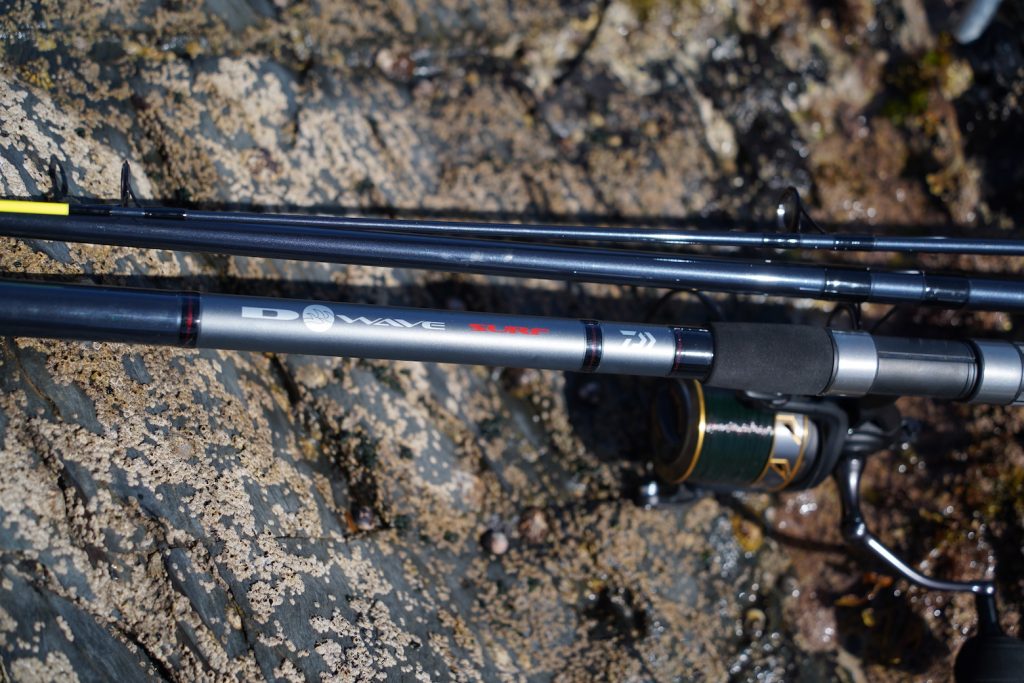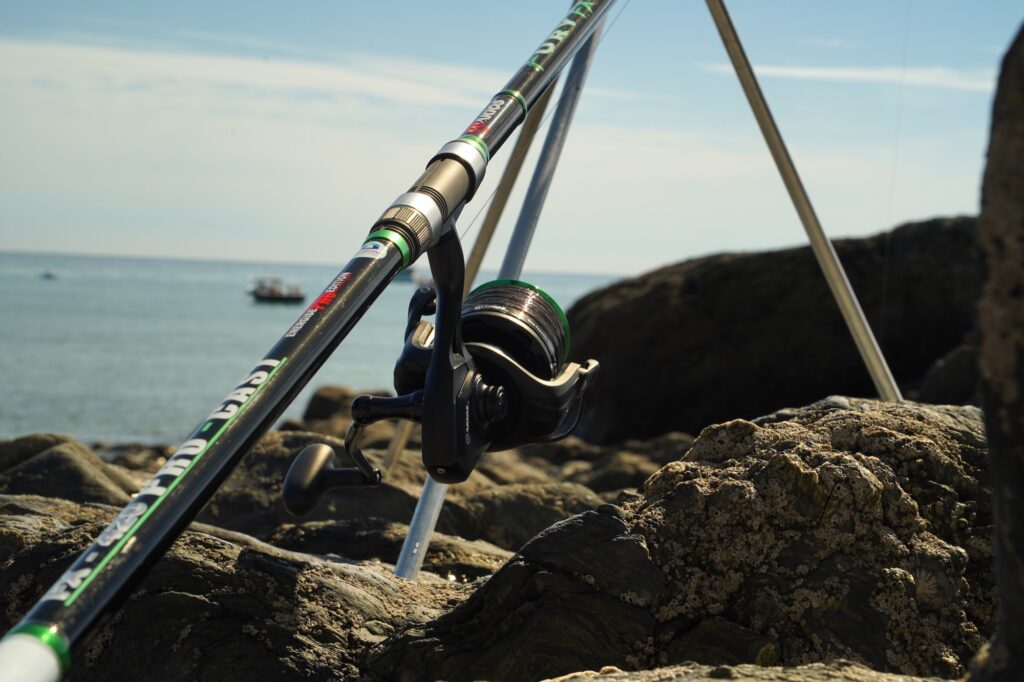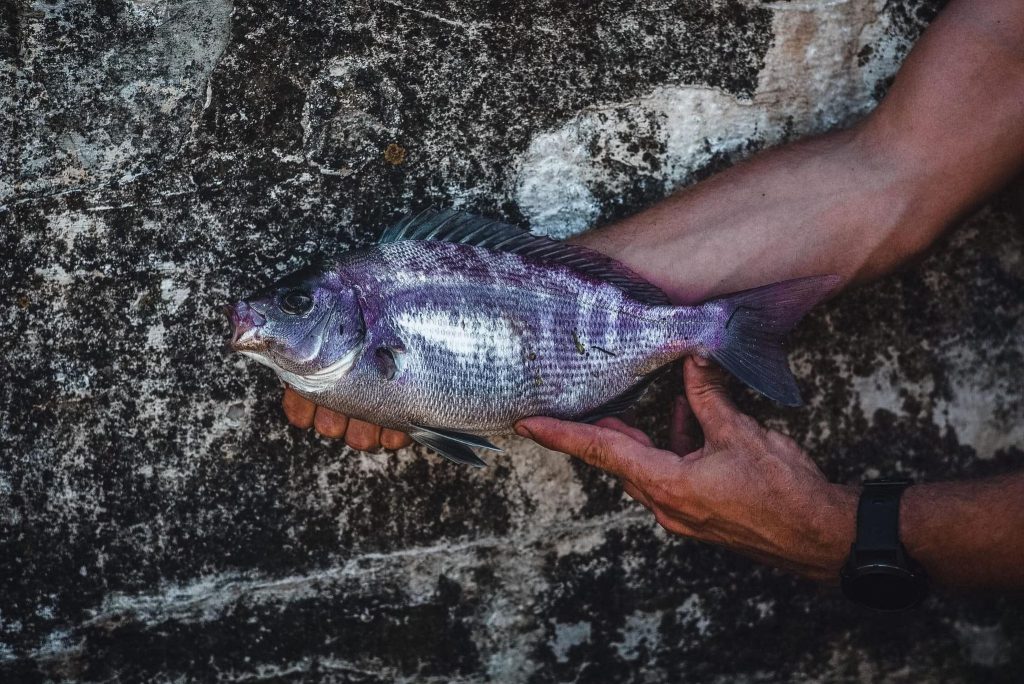Sea fishing hooks
We are both in need of a good hook, and on this page, you will see fifteen types – each of which with its own special way of catching you fish. By using different hooks (mainly depending on desperation levels), you can increase your chances of catching even if your initial target species hasn’t shown up.
The fifteen types of hooks below are designed with specific baits, species and situations in mind. It’s handy to have a selection of hooks and to know when to use them. A strong chemically sharpened size 1/0 Uptide hook will get you a very long way if you’re a casual sea angler. For those with specific target species in mind, this guide may be useful.
FISHMAG is an Amazon Affiliate and earns commissions from sales.
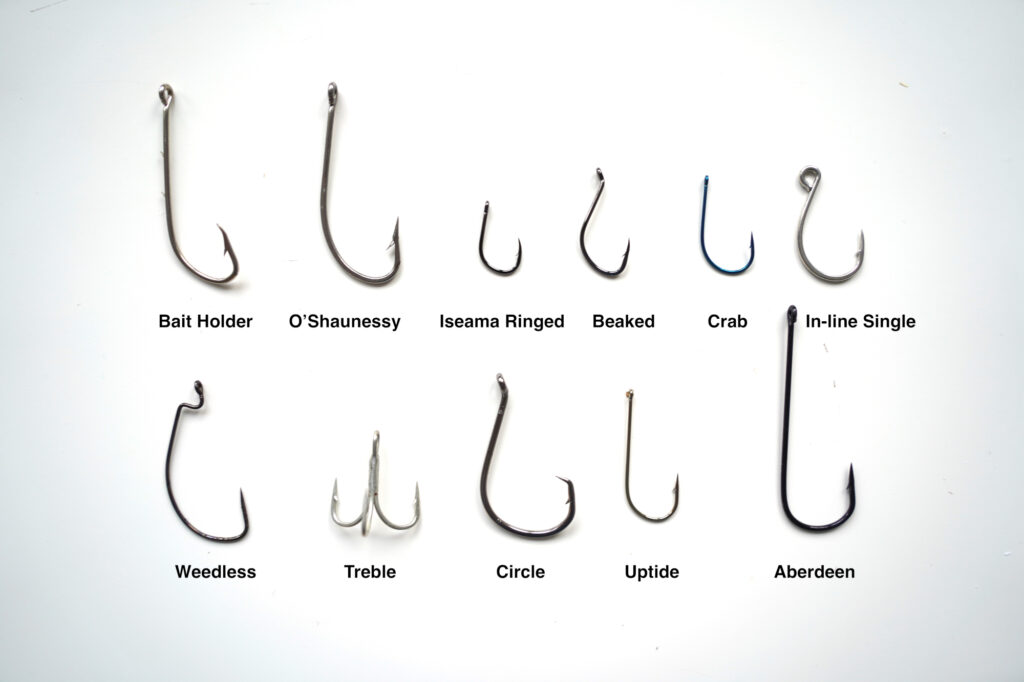
We have a separate guide to sea fishing hook sizes.
All the hooks below will go blunt when they get snagged or have been used for a while. Hook sharpeners are useful for this – you just run your hooks over them a couple of times and they’re razor sharp again.
- Types of Sea Fishing Hook
- 15. Aberdeen hooks (Kamasan B940)
- 14. Circle Hooks
- 13. O’Shaughnessy hooks
- 12. Uptide or Viking hooks
- 11. Semi-circle hooks
- 10. Treble Hooks
- 9. Crab hooks
- 8. Beaked or Octopus Hooks
- 7. Worm or Weedless Hooks
- 6. Bait holder hooks
- 5. Match hooks
- 4. Siwash Hooks
- 3. Jig Hooks for Casting Jigs
- 2. Kahle Hooks
- 1. Pennell Hooks
Types of Sea Fishing Hook
The design of hooks used in sea fishing is referred to as a pattern. There are numerous patterns available, with some of the most widely used being the Aberdeen (a fine-gauge hook ideal for general fishing), the Baitholder (featuring barbs on the shank to prevent baits from sliding down and hiding the point), and the O’Shaughnessy (a strong and thick-gauge hook).
Renowned hook manufacturers like Mustad produce their own patterns, such as the Viking hook, originally designed for boat fishing but now popular among shore anglers due to its strength and durability. Other brands, like Kamasan, offer their versions of classic designs, like the Kamasan B940 Aberdeen hook, a widely used all-round hook by British Anglers.
15. Aberdeen hooks (Kamasan B940)
Popular all-rounder, excellent with worm baits due to the fine shank
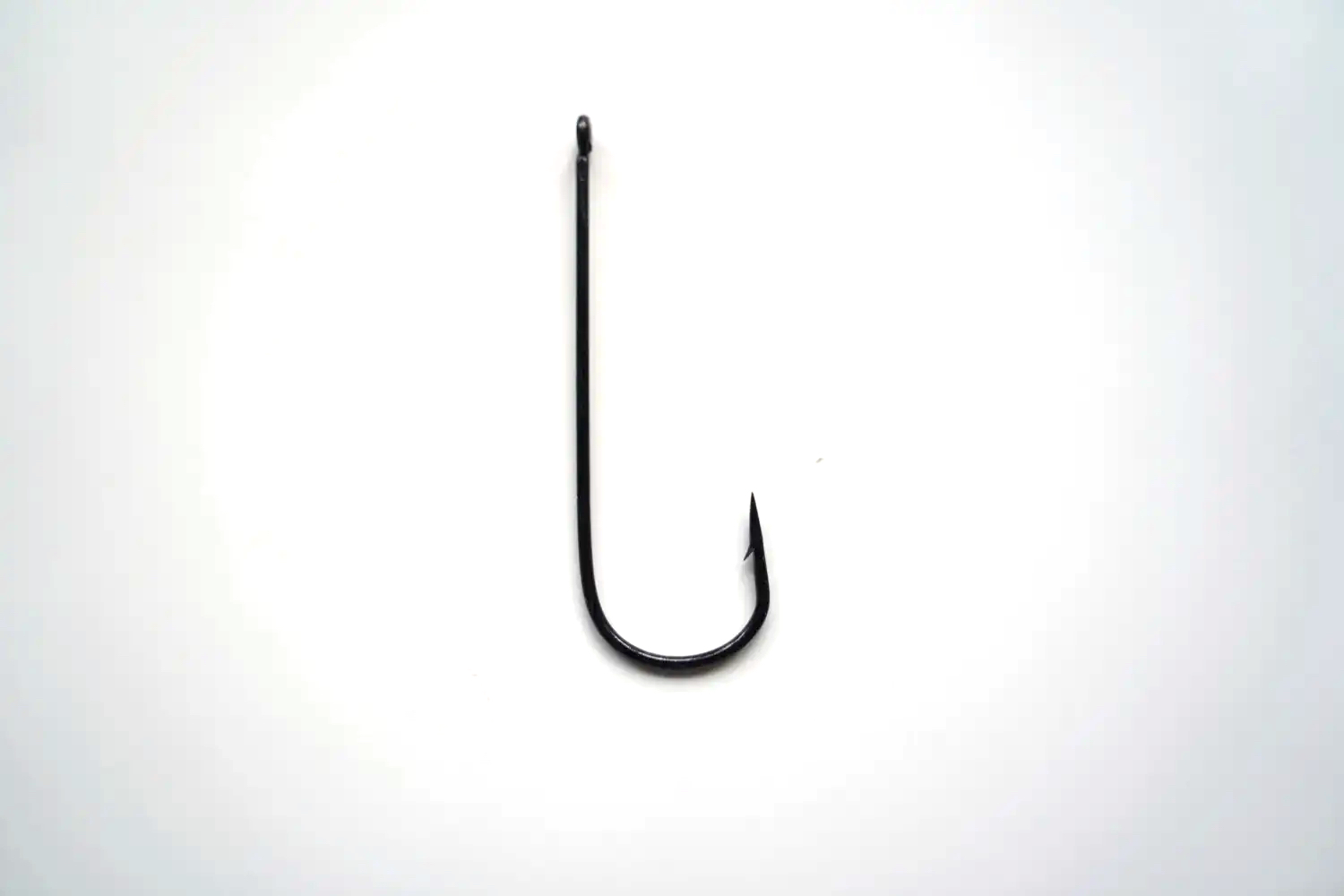
Aberdeen hooks are probably the most popular sea fishing hook for both shore and boat fishing when using worm baits. These hooks are sometimes referred to as worm hooks, but the long shank makes it easy to thread sandeel, squid and mackerel strips too. One of the common features on an Aberdeen hook is a needle point; this means the hook point leans inwards slightly. Because of this, the hook can get away with having a smaller barb. This small barb then helps with releasing fish and reduces damage to worms being threaded on. Aberdeen hooks also have neat eyes, so you can thread baits all the way up over the top of the eye.
The Aberdeen hook is so named because it was first used in the salmon streams of northeast Scotland. They’re the most versatile type of sea fishing hook. The best Aberdeen hook we know is is from Varivas, which are made in Japan. The most popular staple hook over the years has been the Kamasan B940 Aberdeen.
14. Circle Hooks
The best shark fishing hooks, since they prevent deep hooking

Circle hooks are used for UK shark fishing – Bull Huss, blue shark, tope etc. This is because the point bent towards the shank reduces the chances of deep hooking fish. It’s difficult to remove hooks from the mouths of sharks, so this is important for catch and release fishing. Circle hooks often take hold without the need for the angler to strike.
Research in the USA showed that circle hooks result in a higher rate of lip-hooked fish compared to traditional J-hooks. However, one highly experienced skipper FISHMAG interviewed said he found it easier to remove J-hooks from the mouths of tope. He said the key was striking early. It’s also difficult to thread worm baits on circle hooks.
Circle hooks in sizes 1-3/0 are popular. The size of these hooks is pretty different from the size of regular straight shanked hooks.
13. O’Shaughnessy hooks
Best boat fishing hooks
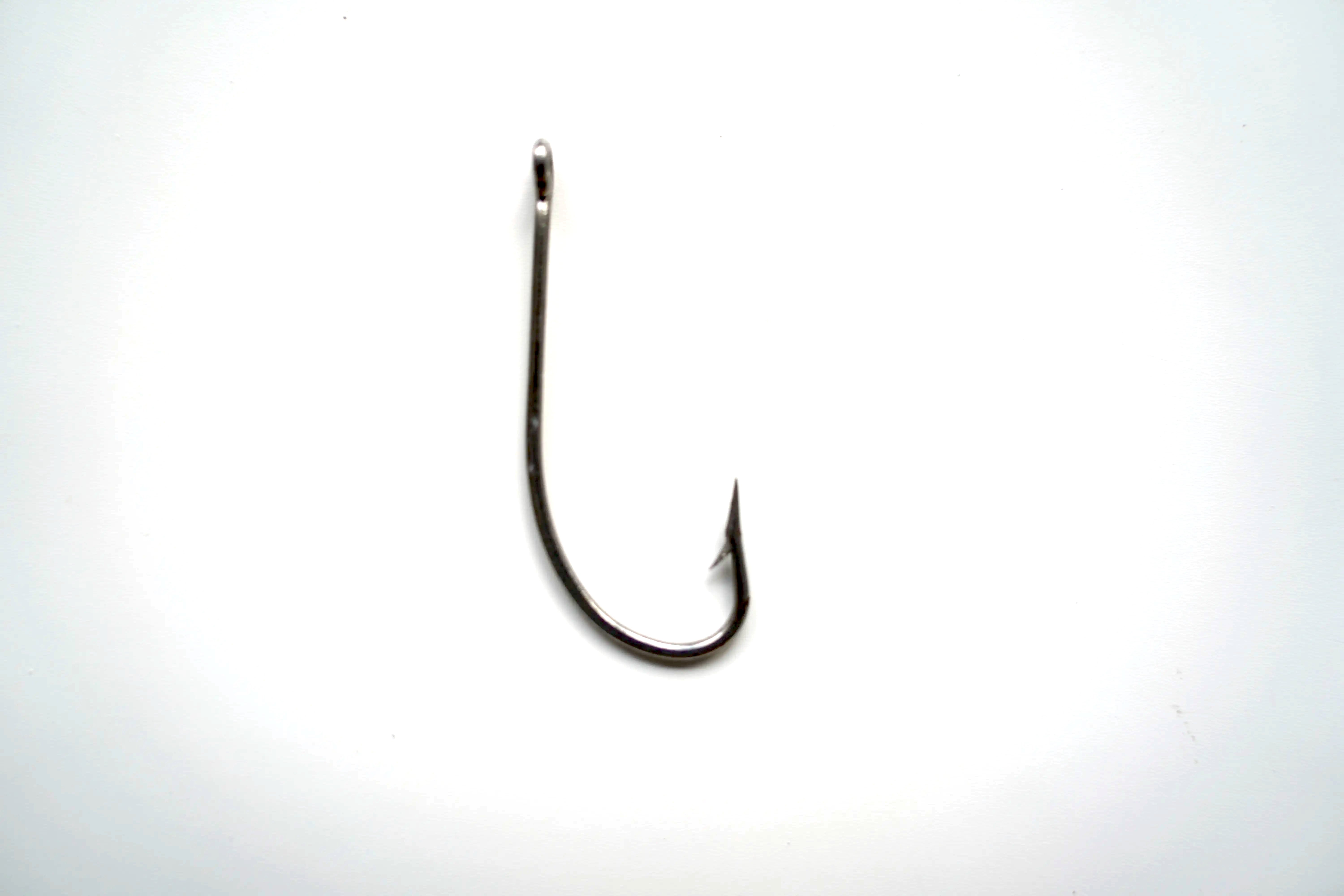
The Mustad Bronzed O’Shaughnessy 3407 is a classic, heavy-duty boat fishing hook. The hook is available in sizes 4/0 to 14/0 with packs of 25 (12/0 in packs of 10 and 14/0 in packs of 1). Made in Norway, the hook has a heavy wire and medium shank O’Shaughnessy bend, traditional Mustad point, large barb, and strong eye. The hook is well-suited for fishing with big baits and for big fish like offshore cod, conger eels, tope, and other shark species. It’s a very strong hook for presenting big baits. Kind of the opposite of a finesse approach!
These are popular hooks and could be used for shore fishing for conger or rays as well as general deep sea boat fishing.
12. Uptide or Viking hooks
Strong hooks for boat fishing
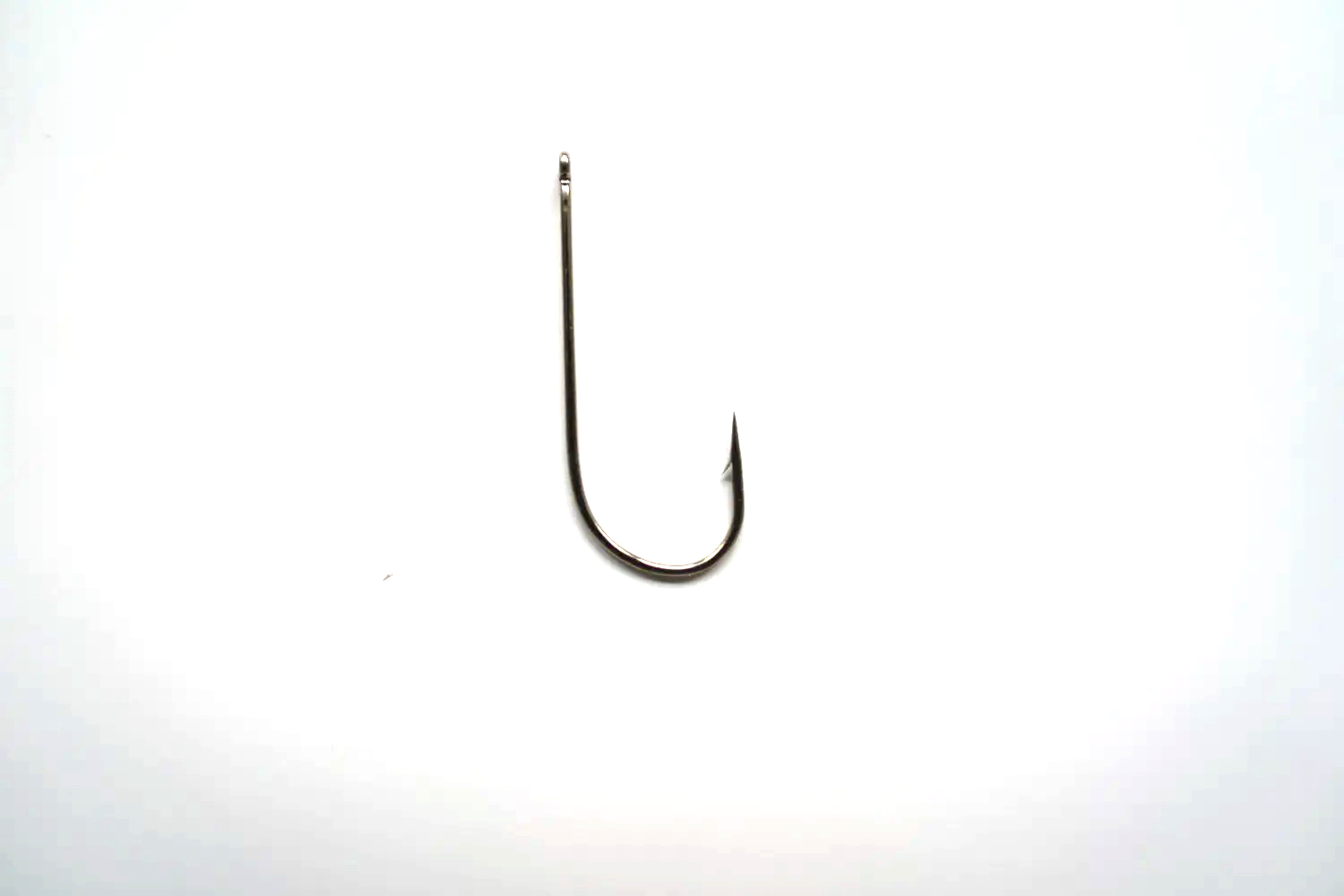
Uptide hooks are strong hooks with a thick gauge and a relatively short shank. They’re useful for catching big fish, which is why their name references the ‘uptiding’ method of boat fishing. It’s common to use these hooks with big baits, especially with peeler and hermit crabs for larger fish like smooth hounds and bass. They’re also often used with worm and squid baits. Basically, reach for these when you want an all-round hook for bigger fish.
Uptiding refers to the method of a casting your rig against the tide from a boat. If you did this with a light lead, the lead would roll back towards you in the boat with the tide. You don’t want that to happen. If you’re fishing with others, the rig would travel downside and get tangled with others. Even if you’re alone, the lead being closer to you would make it difficult to maintain the correct amount of slack in your line for the lead to hold the bottom. Too much tension in your line will pull the weight up, and as your rig gets closer to you as it’s carried with the tide, the distance from you would become less and the weight would struggle to hold the bottom.
All this is to say, that when you’re uptiding, people often need to use heavier gripper leads and heavier rods. The method is commonly used for catching larger fish offshore, and so the hooks associated with it are a bit thicker than your average shore fishing hook.
11. Semi-circle hooks
A versatile hook, particularly useful for shark fishing
Semi-circle hooks, as you might expect, are half way towards being a circle hook. The primary benefit is the same as that of a circle hook – more fish are hooked in the lip and less are deep hooked. This makes them better for catch and release fishing. But the difference is semi-circle hooks can be used more easily with worm baits for species like bream.
Semi-circle hooks confer some of the benefits of circle hooks but are more versatile.
Semi-Circle hooks, available here
10. Treble Hooks
The hooks that come on bass plugs and many spinners
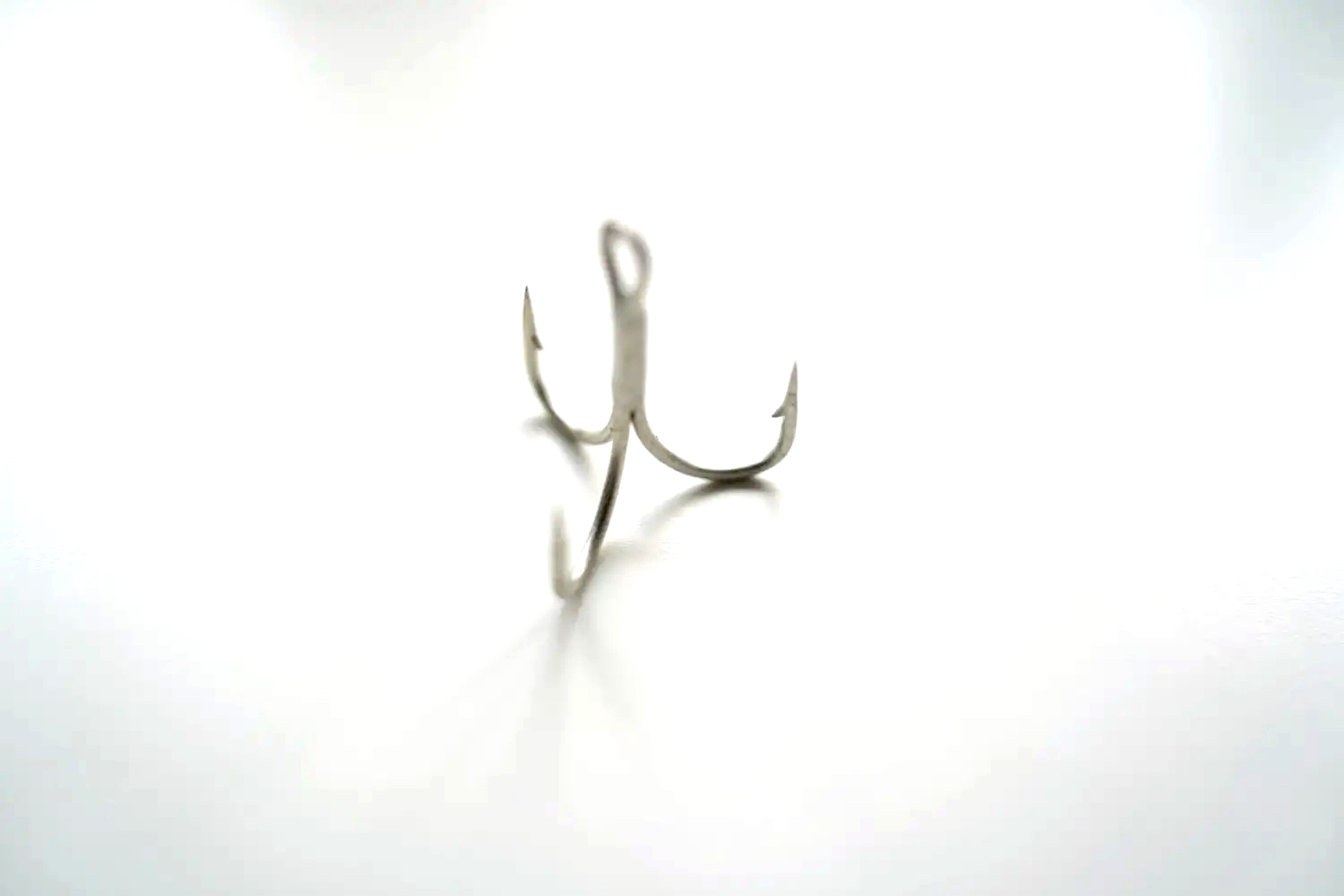
A treble hook has three points, as opposed to a single point on a traditional hook. You will find these hooks on most hard lures and metals, like plugs and spinners. The multiple points on a treble hook increase the chances of a successful hookup, as one of the points is likely to be facing the right way.
However, treble hooks are not suitable for bait fishing, as they tend to only pierce shallowly and can be difficult to remove without accidentally hooking oneself. They also cause damage to fish, so they aren’t the best for catch and release fishing, even though they are widely used for that purpose. The tricky thing is, most plugs are designed to work with treble hooks and if you swap them out, they lose their action.
Treble hooks are often used in UK sea fishing and come in various sizes, with size 2 being used for larger lures for species like bass or pollock and size 4 or 6 being used for general spinners for species like mackerel.
9. Crab hooks
The best hooks for rigging crab baits
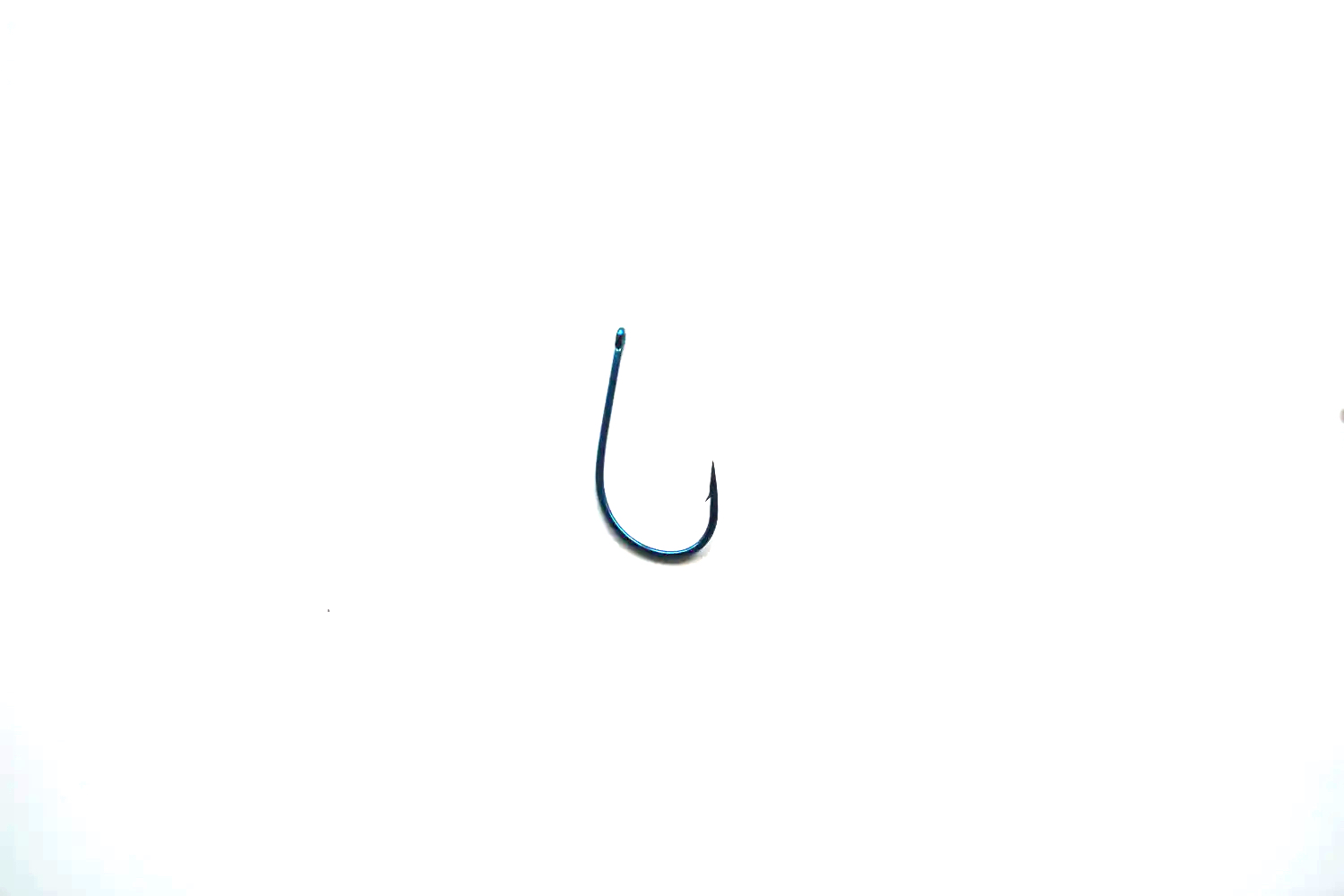
The main feature of crab hooks is a wide gape and short shank. This makes it easier to rig crabs and other shellfish. They are popular for match fishing because they come in smaller sizes which will take smaller fish while having a thick enough gauge to handle bigger catches like smooth hound.
An old school classic is the Limerick style short shank. Also check out the Kamasan B900C is or the B940S, which is a short shank version of the Kamasan Aberdeen. All these work great with crab baits.
8. Beaked or Octopus Hooks
Best for snelling and as a top hook on pennel rigs
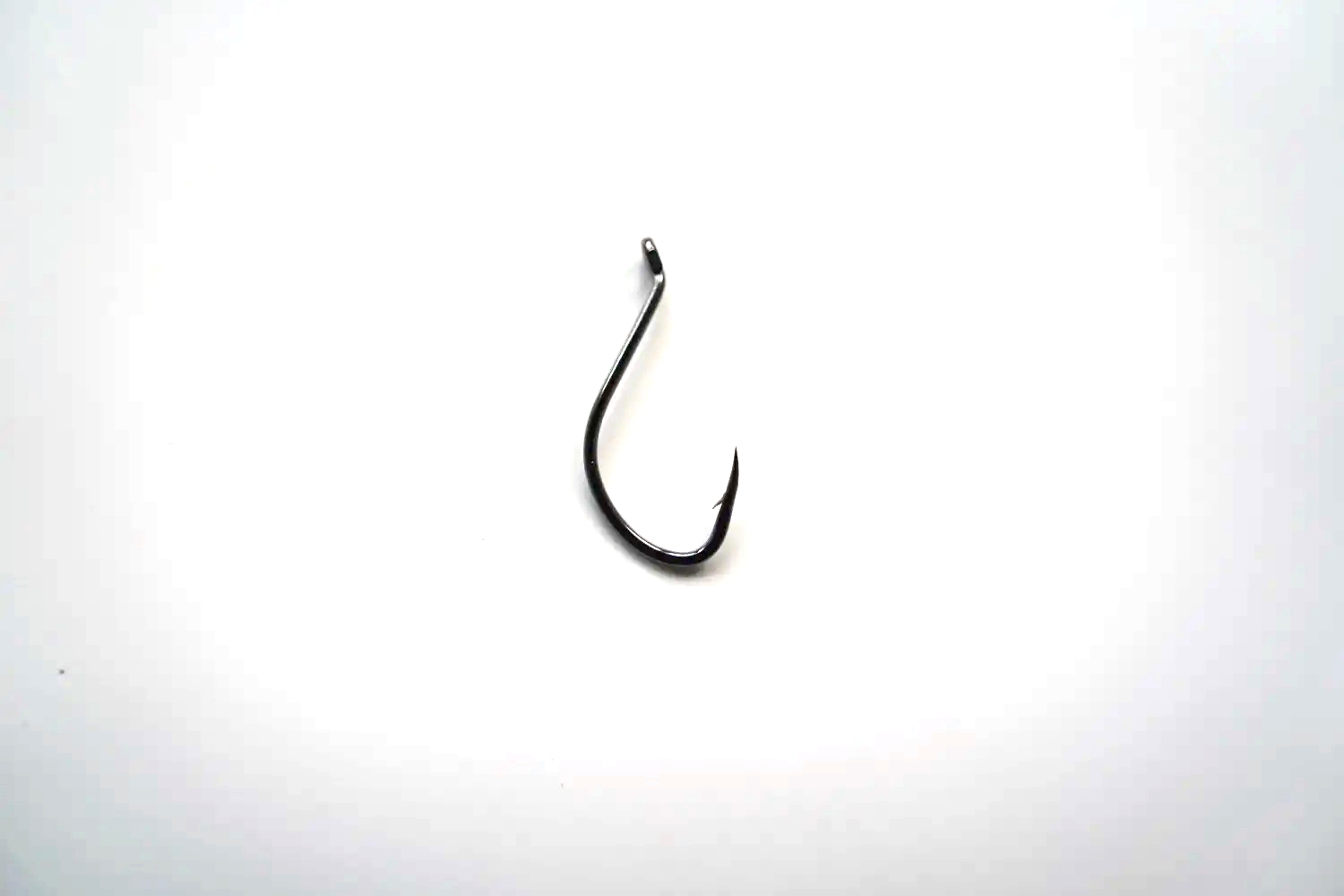
The key feature of a beaked or octopus hook is the turned up or ‘offset’ eye. This means that when snelling hooks to your line, the hook point stays perfectly parallel to your line. Snelling is when you tie on a hook to your line by wrapping your line around the shank of the hook, rather than tying a knot. You can also just push your line through the top eyelet, then secure the line to the shank of the hook with some thin silicon tubing. Some people won’t attach the top hook on a pennel rig at all and it will be free running on the line.
The purpose of snelling is to have your hook point parallel to your line so that your baits can be rigged neatly. Imagine a hook running at 90 degrees from your hook – the hook point would be sideways. When you buy Octopus hooks for this purpose, make sure the eyelet leans away from the hook point not towards it for best results.
As for the rest of the hook, it has a short shank allows you to rig smaller baits more naturally. The thick gauge on the other hand means you can land bigger fish on large crab or mackerel baits. A versatile hook that can be used in a several ways.
The Kamasan K60 or this one from Veals are recommended.
7. Worm or Weedless Hooks
Used for lure fishing with soft plastic lures over rough ground, to prevent snagging on the bottom. Very useful for wrasse, and used in Texas rigs, Carolina rigs and the weedless weightless rig.
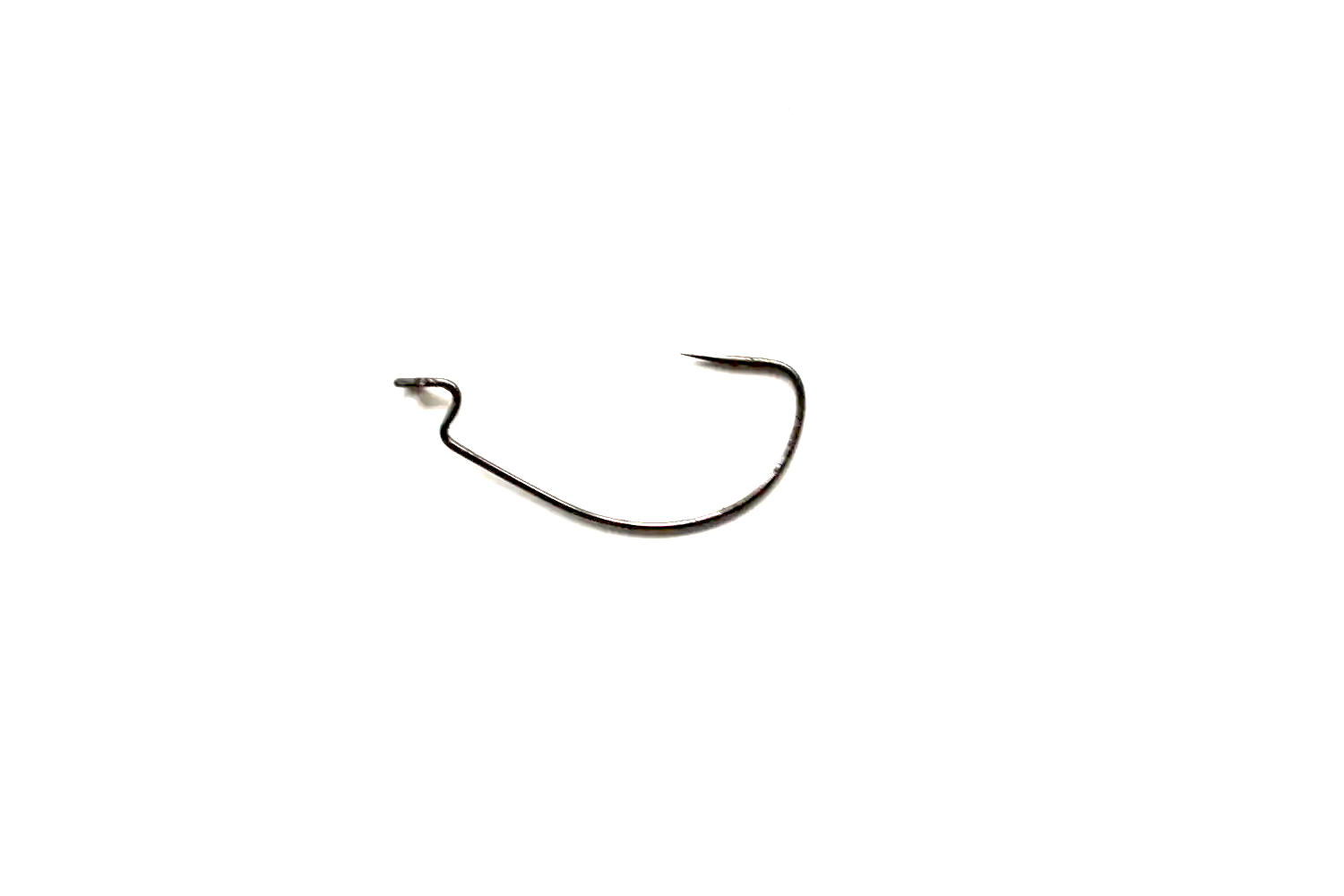
Weedless hooks are popular with lure anglers using soft plastics. They allow you to cast into heavy kelp and structure with far less snags. The hook point sits parallel to your lures body, so that the hook point is not sitting proud. This means weed can run over the hook without getting hooked. When a fish bites, the soft plastic is easily pulled down and the hook point is revealed.
Weedless hooks are essential for British lure fishing with soft plastics, and many of the most successful pre-rigged lures, such as the Fiish Minnow, incorporate them into their design. In theory, you could rig a sandeel very nicely on a weedless hook, but this is not something I have heard of anybody doing. It would be interesting to know if this would be useful for rough ground fishing.
6. Bait holder hooks
Useful for anglers that are not using worm baits and perhaps prefer not to use baiting elastic to hold baits to the hook.

Bait holder hooks are essentially the same as Aberdeen hooks but with barbs on the hook shank to hold baits in place. The one I have in mind from Mustad also has a thicker gauge so is stronger than the Aberdeen hooks. The hook point is also ‘rolled in’, meaning it leans towards the shank a bit that also makes it harder for baits to come off. Bait holder hooks are useful for anglers with a long cast that are finding delicate worm and squid baits are coming off the hook. Those that don’t use clip on weights to prevent delicate worm baits from coming off during the cast will also benefit from bait holder hooks.
The bait can still travel up the hook but doesn’t travel down. These can cause more damage to fish you catch so they’re better for anglers that plan on eating their catch and are not ideal for general catch and release fishing.
5. Match hooks
Best hooks for whiting, flounder and general winter scratching on tough days.
Match hooks have long, fine shanks which means worm baits are not split as you thread them onto the hook. Match hooks are designed for fishing clean ground for flatfish, codling and other relatively small species. Perfect for whiting, dab – all the British staple winter species.
The limitation of match hooks is that they bend out easily when you hook a larger fish or get snagged. They are not strong. However, they are useful for a winter scratching session when you want something very fine for the mouths of dab or whiting. In other words, a great hook when desperate!
Scratching Match hooks, available here
4. Siwash Hooks
Useful for anglers that are fish welfare conscious and want to minimise damage to bass while using plugs. Really excellent idea, especially if you do 100% catch and release.
Siwash hooks are something we’re keen to experiment more with at FISHMAG. That’s because you can use them to replace the treble hooks that typically come on plugs and spinners. When catch and release fishing for bass, it seems excessive to use 2-3 treble hooks that will inevitably cause more damage to fish than is required to catch them. Siwash hooks have an ‘open eye’, which means once you’ve taken the trebels off their split rings, you can just attach the hook directly on. Then, with a set of pliers, you squeeze the open eye to close it, and it is secured to the lure. This is much easier than attaching a regular hook to a split ring.
Siwash hooks have long shanks so they dangle down below your lure.
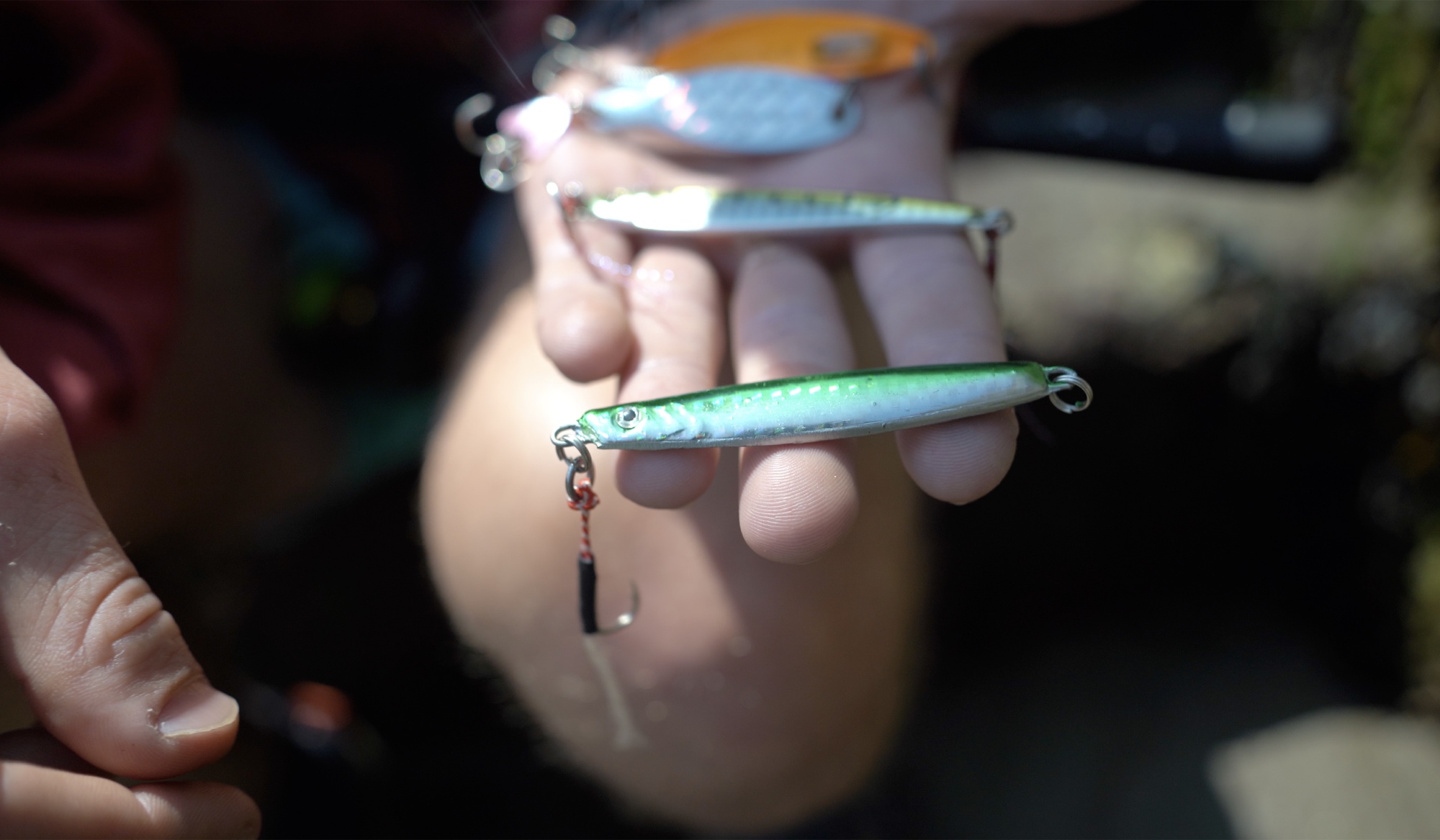
3. Jig Hooks for Casting Jigs
Best hooks for upgrading the ones that came on your slow jigs
Jig hooks are used to replace hooks on casting jigs. They often come in pairs of hooks attached with a very short string snood. Casting jigs are a type of lure that was originally designed for jigging down the side of a boat. This involves dropping a metal lure directly down the side of the boat, then sharply lifting your rod up and reeling in before allowing the lure to sink back down again. This up and down motion attracts fish, and the method allows you to target a specific depth in the water column. This is especially useful for those using fish finders that actually know what depth the fish are feeding at.
Jig hooks are strong given how fine they are. They can be designed to increase the movement of the jig. It’s important to file or crush down the barb if you plan on releasing your catch when using jig hooks. Sometimes you need to replace the hooks on old casting jigs, which is probably the only time you’d buy these hooks.
Assist hooks for jigs, available here
2. Kahle Hooks
Best hooks for fishing big baits while on holiday you lucky fellow
Kahle hooks have super wide gapes for rigging big baits. They could be useful if you want a longer shank than you get with a circle hook but you still want a super wide gape so you can rig larger crab or fish baits. These aren’t popular amongst UK sea anglers and are more popular abroad in the US surf casting scene for big fish.
1. Pennell Hooks
The two best hooks for setting up the pennell rig with bigger baits
This is not a type of hook but people refer to them as ‘pennel hooks’ anyway so they’re included. On a pennel rig, it’s common to use two different types of hooks on the same bait. This means that whether a fish takes the top of a bait or the bottom, you still hook up. Some anglers use two hooks on the same size and type, but others will use, say, an Aberdeen hook on the bottom, and a beaked or octopus hook on the top. It’s a personal preference, the main thing is to ensure that your hook sizes are appropriate for the size of your bait.
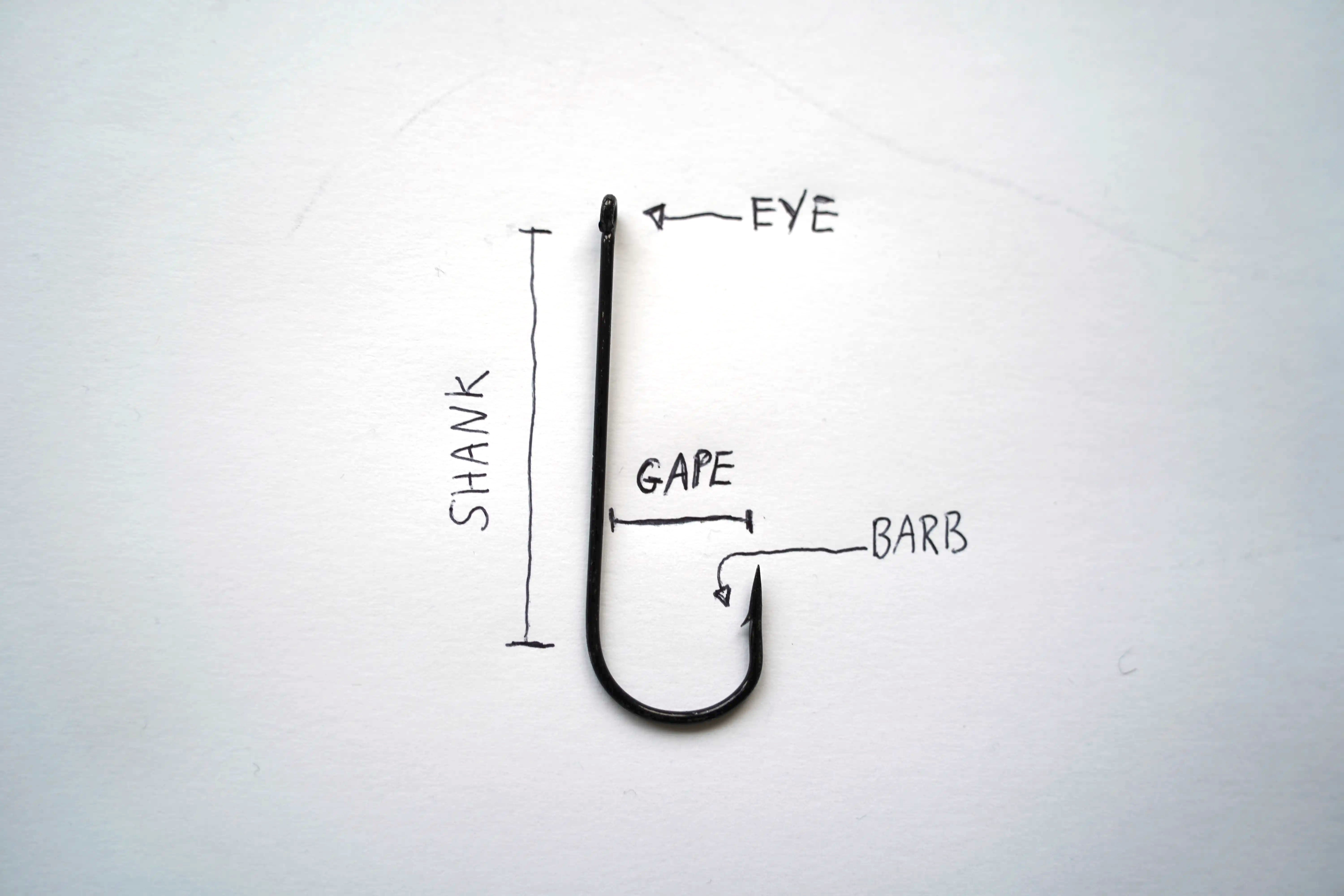
Sea fishing hook terminology:
- Gauge: The ‘gauge’ of a fishing hook refers to the thickness of the wire the hook is made from. Thick gauge = strong. Thin guage = better bait presentation.
- Gape: The gape is the gap between the point and the shank. Larger gape hooks are needed for big baits or for fishing weedlessly.
- Shank: The shank of a hook is the main length of the hook. For flatfish, longer shanks are used to make unhooking easier. For sharks, circle hooks with short shanks prevent deep hooking.
- Point: Cheap hooks can have blunt points. Even good hooks benefit from sharpening with a hook sharpener.
- Barb: The barb of the hook is a backwards-point notch in the hook that provides a secure hold on the fish, but causes damage when removed. Anglers can use barbless hooks for species with hard mouths to make hook removal much easier.
- Eye: The eye is what your line goes through. Small eyes allow worms to be threaded over them. Heavy lines demand larger eyes.
We also have a guide to the different sizes of sea fishing hooks.
Anyfish Anywhere Rod Range Explained
Exploring the Anyfish Anywhere Rod Range: A Comprehensive Guide Anyfish Anywhere has been at the…
Sea Fishing lines
Sea Fishing lines Your line is perhaps more important even than your reel or your…
The best beach casting reels, and how to find yours
The best beach casting reels, and how to find yours Beach casting reels have to…
Sea fishing starter kit | beginners set up
Sea fishing starter kit | beginners set up First, I will explain the three main…
Beachcasting rods | Find the best
Beachcasting rods | Find the best A beachcasting rod is specifically designed for casting from…
Beach Casting Guide
Beach Casting Guide Could you survive an apocalypse with just a beach casting set up?…

